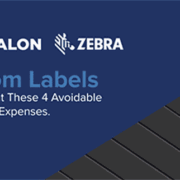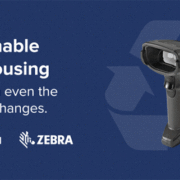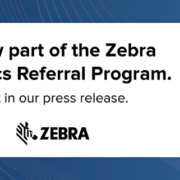While printing supplies cost less than ten percent of a business’ total expenses, enterprise labels play a key role in securing smooth product movement down the supply chain. Carrying several identification codes, such as shipping address, storage instructions, and SKU number, crisp barcodes are part of your inventory’s first defense against misplacements. Fading, peeling, and smudged barcodes are among the principal causes of preventable setbacks such as:
- Product shrinkage – Two years ago, product shrinkage cost retailers over $40 billion due to misplacements, spoilage, and theft. When labels aren’t optimized to withstand extreme temperatures between multiple locations, adhesives may lose strength and peel, thus falling away with the crucial information your teams need to accurately fulfill orders.
- Delivery delays – New studies show that over a fifth of deliveries were late within the first quarter of 2021. That number is expected to rise dramatically by the end of the holiday season for all major parcel delivery services. Worsening the labor shortage crisis, underperforming labels stall productivity as they must be rescanned or even re-labeled, setting distributors at a disadvantage in today’s fast-paced market.
- Missed audits and compliances – Lack of label legibility may require teams to record inventory counts manually, thus enabling manual data entry errors. Missed errors and inaccurate counts provide a skewed view of total operational expenses and storage, resulting in further costs and fees. Moreover, without storage instructions, temperature-sensitive inventory can spoil, further increasing risks of recalls and compliance fees.
- Printer downtime – Lastly, poorly-made labels are often tightly wound, leading to adhesive leaks that damage printer feeders. Sandpaper-like label surfaces also scratch [printheads causing premature failure and downtime. Without functioning printers, warehouses face costly bottlenecks and downtime costing as much as $100,000 per hour.
To support manageable operational costs, underperforming labels should be readily replaced by an enterprise-ready alternative. While there are several labeling options available nowadays, customized printing supplies, like Zebra’s Certified Consumables, continue to stand as one your best options for the following reasons:
- Compatibility with your exact application requirements – Labels can be tailored to survive extreme temperatures, condensation, humidity, abrasion, and any other unique challenges in your environment.
- Built from pre-tested materials for consistent quality – Zebra’s certified labels are only built from materials passing through their 23-point performance test, thus ensuring dependable functionality in a myriad of use cases.
- Selected perforation and folding preferences – New label technology has given way to linerless, dissolvable, and even metal-friendly RFID labels, expanding the range of efficient labeling beyond the four walls.
- Faster label replenishment – With four label convertor facilities scattered across North America, Zebra labels can be quickly replenished to avoid downtime.
To learn more about how you can customize your enterprise labels, contact our labeling experts here.





